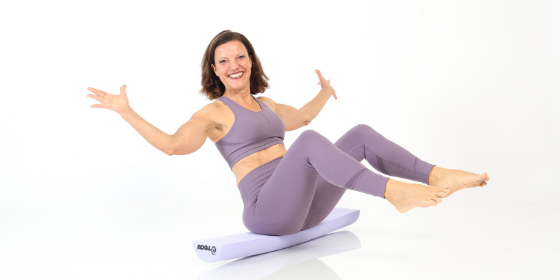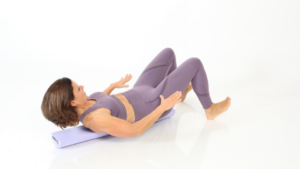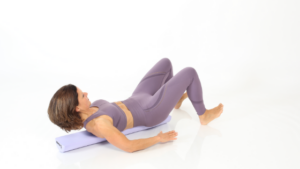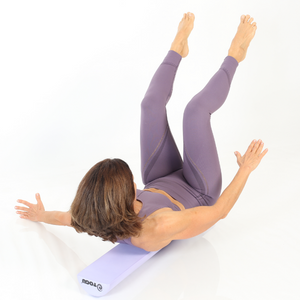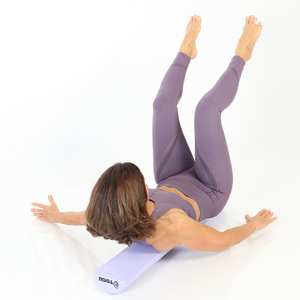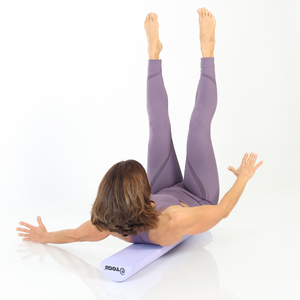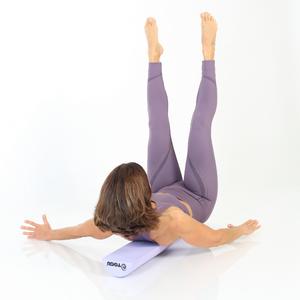The improvement of coordinative skills automatically increases the economy of movement in everyday life.
New at TOGU in cooperation with the sports scientist Petra Schreiber-Benoit.
Great workout with the Pilates Half Roll Premium.
Training becomes neuromuscular when the central nervous system and the musculoskeletal system (CNS)
and the musculoskeletal system with the skeletal muscles are equally muscles are challenged.
The brain receives information about posture, movement and position of the body via proprioceptors.
They thus serve the depth perception of the body’s position and movement in space,
of muscle tension, muscle length and joint position.
They pass on all this information to the cerebellum (unconscious depth perception)
and the cortex (conscious depth sensitivity) where it is processed.
The instability ofthe Half Roll is an ingenious challenge for all the senses during training.
Exercises with the Half-Roll train the sensory processes with their motor actions.
The improvement of coordinative skills automatically increases the economy of
movement in everyday life.
This new sports tool makes your Pilates training even more effective!
“The Hundred” on the Pilates Half Roll
Lying on the back and moving the arms up/down
Musculature involved: Straight abdominal muscle (M. rectus abdominis),
Pyramidal muscle (M. pyramidalis), supporting musculature: oblique
Abdominal muscle (M. obliquus abdominis). Back of the leg muscles.
Starting position: supine position on the Half Roll. Place both legs with the heels.
Activate the powerhouse. Raise the head and hold the chin above the sternum to relieve the neck. Stabilise the posture.
Exercise description: Exhalation: Move both arms up/down 4-5 times, palms facing the floor.
Inhalation: Raise/depress both arms 4-5 times, hands palms facing the deck.
All the time press both heels down strongly into the floor.
Slowly increase the repetitions over time until you can hold your head in the air for a total of 10 breaths.
= 100 arm movements up/down to keep the head in the air.
Variation 1: Stretch one hand on the floor with the ball of the little finger.
Variation 2: To relieve the neck muscles: Support the head position with one hand.
Variation: Keep both legs stretched towards the ceiling.
Author: Petra Schreiber-Benoit
Enquiries and information about workshops, further training, motivational talks,
courses, personal training, vitality weekends to Petra Schreiber-Benoit at:
www.Schreiber-Benoit.de

